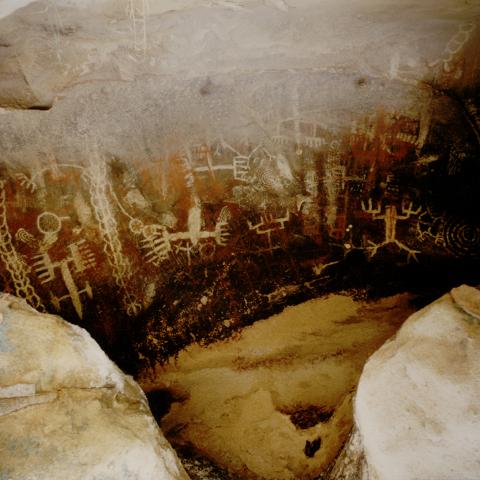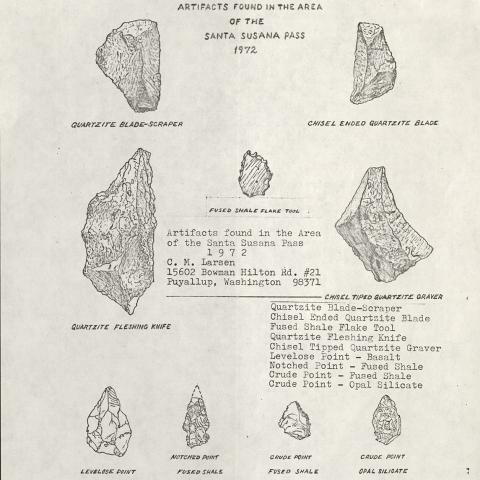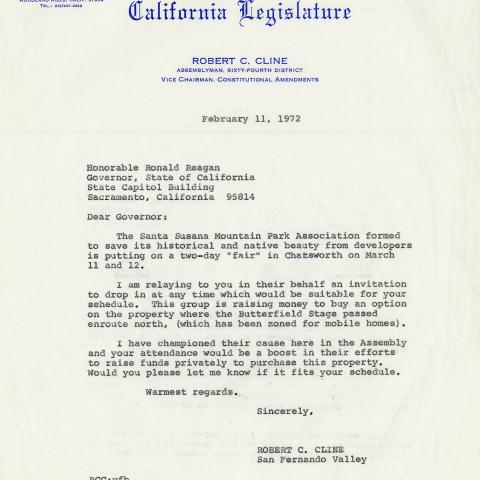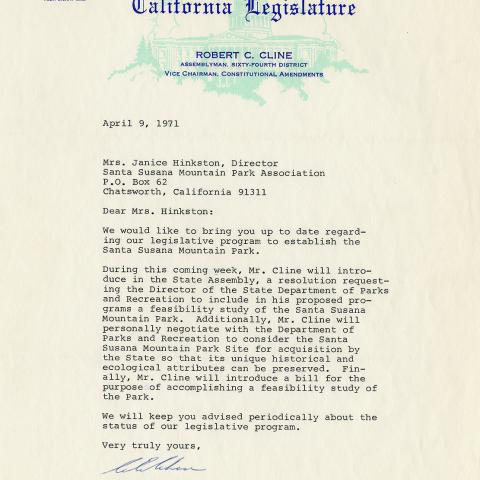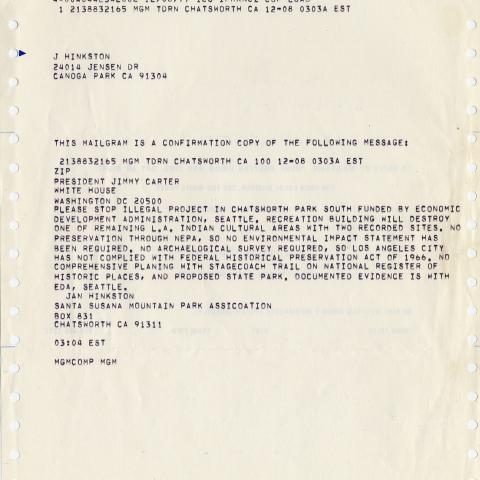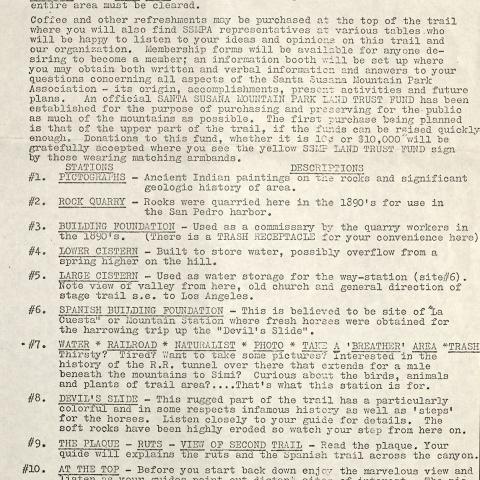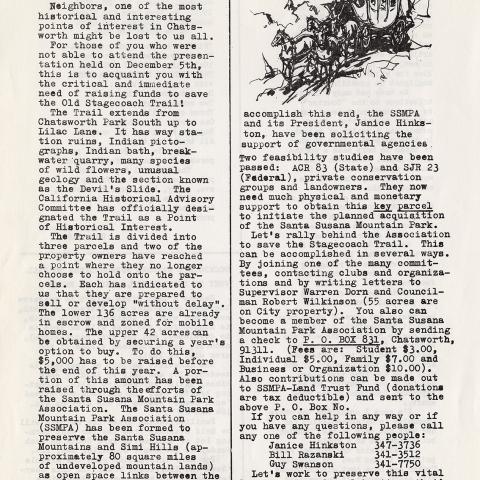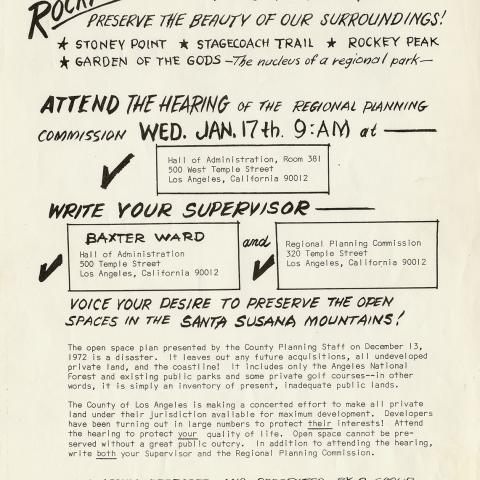Santa Susana Mountain Park Association
September 06, 2016
 Less than seven miles northwest of the CSUN campus lie the Santa Susana Mountains, a craggy transverse mountain range that runs east to west, separating the San Fernando and Simi Valleys, the Santa Clara River Valley to the north, and the Santa Clarita Valley to the northeast. Rich in natural, historical, and cultural significance, the land is dominated by high, narrow ridges and deep canyons covered with an abundant variety of plant life. This thriving ecosystem is inhabited by a diverse animal population, including many species of birds and amphibians, and an array of mammals such as rabbits, squirrels, mule deer, coyotes, foxes, bobcats, badgers, and mountain lions. The documented history of human habitation stretches back for thousands of years, as evidenced by remnants of Tongva, Tatviam, and Chumash village sites, artifacts, and pictographs in the Burro Flats area that date to 500 AD.
Less than seven miles northwest of the CSUN campus lie the Santa Susana Mountains, a craggy transverse mountain range that runs east to west, separating the San Fernando and Simi Valleys, the Santa Clara River Valley to the north, and the Santa Clarita Valley to the northeast. Rich in natural, historical, and cultural significance, the land is dominated by high, narrow ridges and deep canyons covered with an abundant variety of plant life. This thriving ecosystem is inhabited by a diverse animal population, including many species of birds and amphibians, and an array of mammals such as rabbits, squirrels, mule deer, coyotes, foxes, bobcats, badgers, and mountain lions. The documented history of human habitation stretches back for thousands of years, as evidenced by remnants of Tongva, Tatviam, and Chumash village sites, artifacts, and pictographs in the Burro Flats area that date to 500 AD.
The Santa Susana Mountain Park Association formed in 1971 as a non-profit group dedicated to preserving the Santa Susana Mountains and the Simi Valley Hills as open space during the rapid urban development of the surrounding valleys. The organization has acted as a citizens' lobbying group to obtain state and federal legislation and local governmental support, and has been a leader in developing public policy that favors conservation of the area's natural habitat. It also works to preserve the history of the Santa Susana Pass and stagecoach trail, which have played an integral role in California's earliest transportation history. This important work is documented in the Santa Susana Mountain Park Association Collection.
The first recorded mention of the Pass was noted in an 1804 letter from Father José Señan of Mission San Buenaventura to then Provincial Governor José Joaquín de Arrillagain, which suggested the former Indian trail might provide a better communication and transportation route than the El Camino Real, which connected his mission to Mission San Fernando. At the start of the Mexican Republic period, workers from the San Fernando Mission improved the trail to accommodate the commercial needs of Rancho owners, who used the route to move cattle and sheep between ranges and to drive goods to market by ox-driven carts.
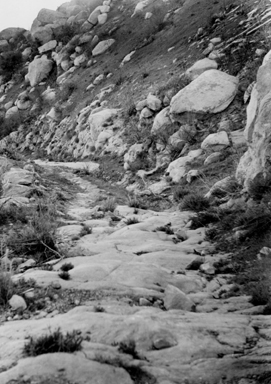 Following the U.S-Mexico War, increasing numbers of American settlers began arriving in the region, and the Santa Susana Pass became a key route for transporting people, freight, and mail between southern and northern California. In 1859, the California Legislature appropriated $15,000 towards improving the Santa Susana Pass Wagon Road. When the Civil War erupted in 1861, and U.S. Mail service routes between Washington DC and Los Angeles were compromised, the federal government contracted the Butterfield Company to carry mail from northern California to Los Angeles via the Santa Susana Pass and Stagecoach Trail. In the early 1860s, María Rita Guillen de la Osa, descendant of one of the first Californios, was employed by the Overland Mail Company to run a swing station at Chatsworth known as La Cuesta, where tired horses could be exchanged for fresh ones, and various tack and other gear was stored to keep the stagecoach line running smoothly. In 1876, the Southern Pacific Railroad tunnel through the San Fernando Mountains opened Los Angeles to transcontinental railroad traffic from the north, and the era of long-distance stagecoach service in California came to a close.
Following the U.S-Mexico War, increasing numbers of American settlers began arriving in the region, and the Santa Susana Pass became a key route for transporting people, freight, and mail between southern and northern California. In 1859, the California Legislature appropriated $15,000 towards improving the Santa Susana Pass Wagon Road. When the Civil War erupted in 1861, and U.S. Mail service routes between Washington DC and Los Angeles were compromised, the federal government contracted the Butterfield Company to carry mail from northern California to Los Angeles via the Santa Susana Pass and Stagecoach Trail. In the early 1860s, María Rita Guillen de la Osa, descendant of one of the first Californios, was employed by the Overland Mail Company to run a swing station at Chatsworth known as La Cuesta, where tired horses could be exchanged for fresh ones, and various tack and other gear was stored to keep the stagecoach line running smoothly. In 1876, the Southern Pacific Railroad tunnel through the San Fernando Mountains opened Los Angeles to transcontinental railroad traffic from the north, and the era of long-distance stagecoach service in California came to a close.
The SSMPA has worked for more than four decades to preserve this rich cultural history and natural habitat. Joined by community leaders and other conservation organizations, the SSMPA facilitated the first purchase of land in 1990, which set in motion the commitment of California State Parks to invest in protecting the area and designating it as parkland. In 1998, the 670 acre Santa Susana Pass State Historic Park was established, largely due to the work of the SSMPA . To learn more about the SSMPA and their work to preserve and protect our regional history, visit Special Collections and Archives!
Image Gallery
Post tagged as: urban archives, publications, san fernando valley
Read more Peek in the Stacks blog entries
